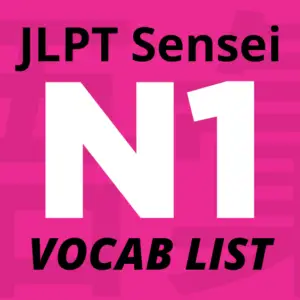Aprende gramática del idioma Japonés: とも~とも (tomo~tomo). Significado: unable to draw a conclusion; unable to judge.
this grammar point is used to introduce two different things (usually contrasting or different), and express that no conclusion can be determined between them.

Access ALL extra downloads, ebooks, and study guides by supporting JLPT Sensei on Patreon.
とも~とも - Oraciones de ejemplos 例文
Cada oración de ejemplo incluye ayudas como la lectura (hiragana) en Japónes, la lectura en romaji, y la traducción en Español.
Da clic en el siguiente botón rojo para alternar todas las ayudas, o puedes dar clic en los botones individuales para mostrar únicamente las que desees ver.
Ejemplo #1
彼女は質問に対する肯定とも否定ともとれる返事が上手い。
Ejemplo #2
最近のゲームは、子供にいいとも悪いとも言えません。
Ejemplo #3
これは本物とも偽物とも判断が出来ません。
Vocabulario 語彙
| Kanji 漢字 |
Kana カナ |
English 英語 |
|---|---|---|
| 肯定 | こうてい | affirmation |
| 否定 | ひてい | denial |
| 上手い | うまい | skilled |
| 本物 | ほんもの | genuine; real |
| 偽物 | にせもの | fake |
Ver todas las lecciones de gramática del JLPT N1


